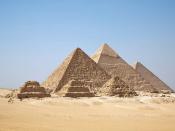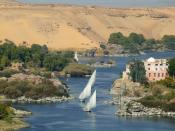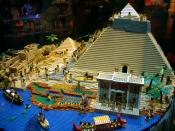In Egypt agriculture is the main economic activity. Four percent of their land is used for farming. Egyptians mostly grow cotton, dates, vegetables, sugarcanes, and wheat. Cotton is the leading export. They use irrigation, modern tools, and farming methods developed by their ancestors.
Before the 1960's Egyptian farmers could only plant once a year after the Nile finished flooding in the summer. Then in 1968 engineers completed the construction of the Aswan High Dam. It holds back the Niles floodwater and the crops grow 2 to 3 times a year.
In ancient Egypt agriculture was the main economic activity. Egypt's harvest was richer than in most other countries. In ancient Egypt the main crops were wheat, and barley, as well lettuce, beans, onions, figs, dates, grapes, melons, and cucumbers. Trade was important to Egypt; goods were exported to and imported from countries around Mediterranean Sea, Aegean Sea and the Red Sea.
Ivory, copper, cattle, leopard skins, and spices were imported from Nubia. Silver, iron, cedar logs, and horses were imported from the Levant.
The main products for exports from ancient Egypt were gold and other minerals, wheat, barley, and papyrus sheets. Products were bartered, and once in a while in craft products for example pottery, cloths etc. Craft were produced in small shops. The crafts included linen textiles, pottery, bricks, perfume, tools, glass, weapons, furniture, jewelry, rope, baskets, mats, and writing material. Egypt's substantial output of mineral products, like limestone, sandstone, granite, copper, gold, tin, and gems.


